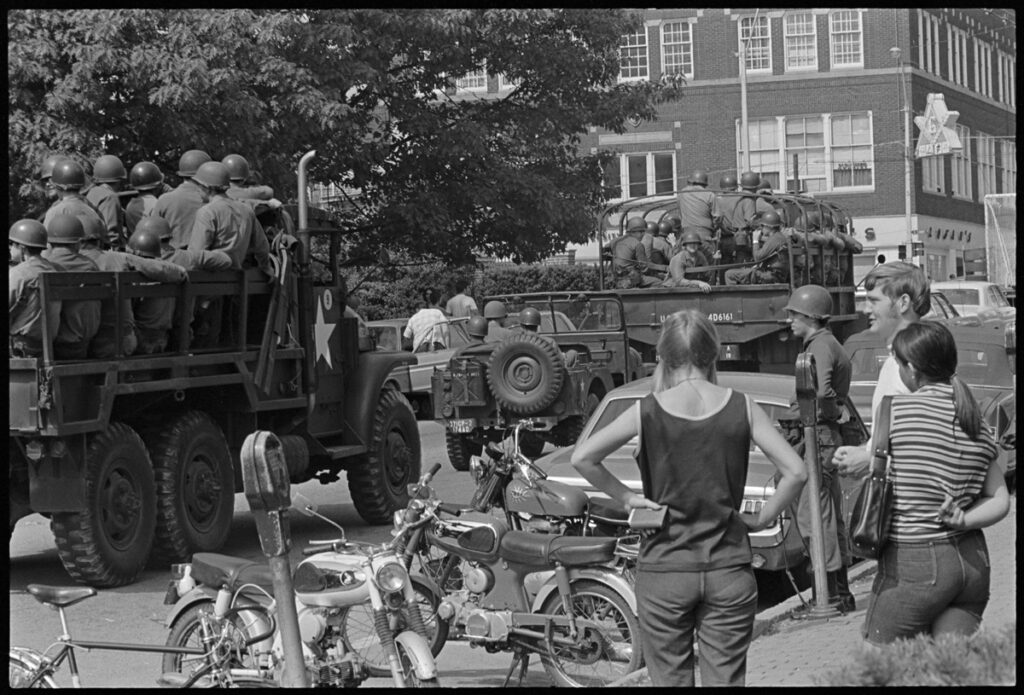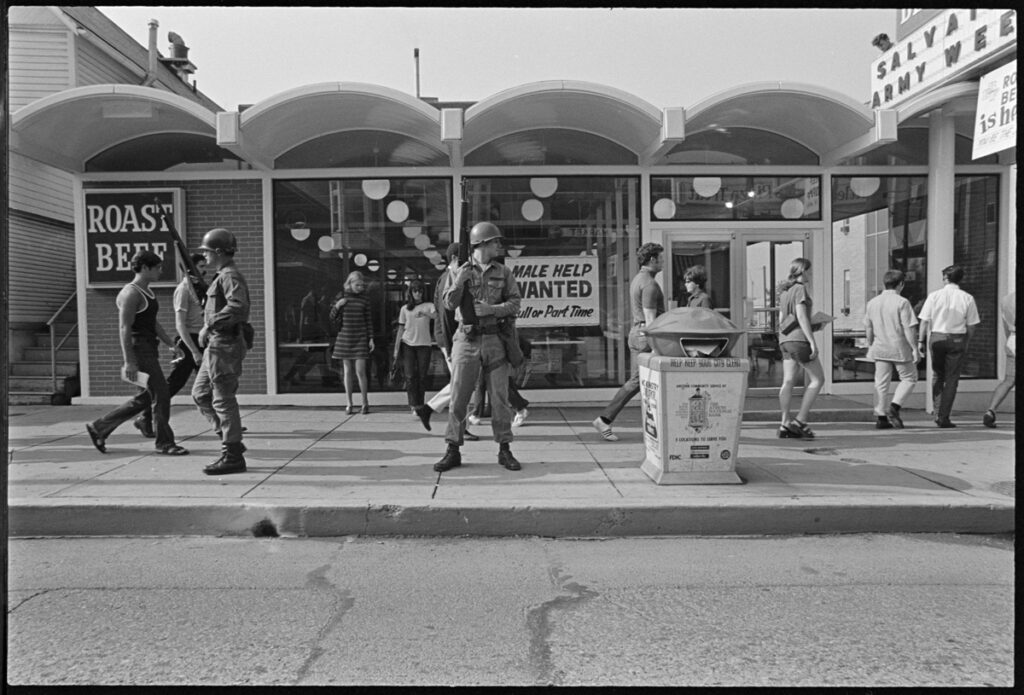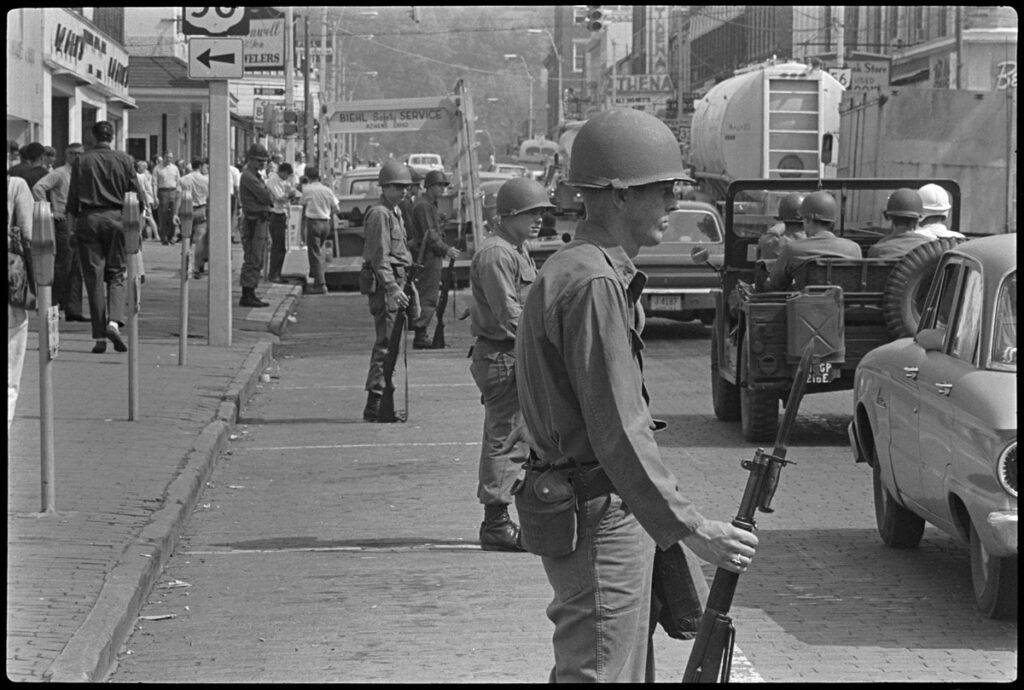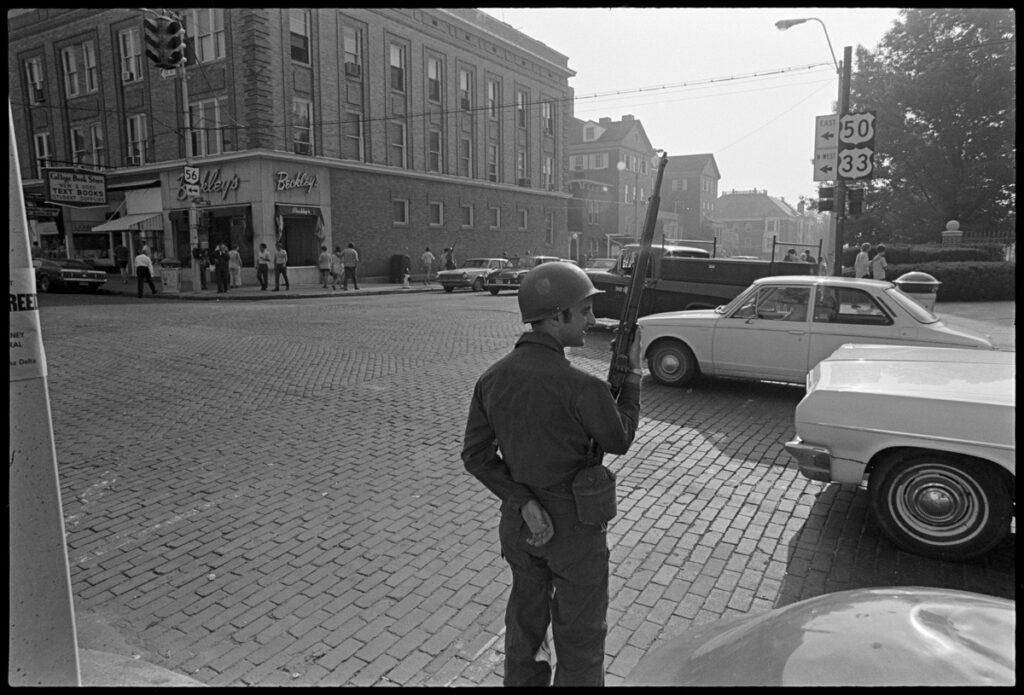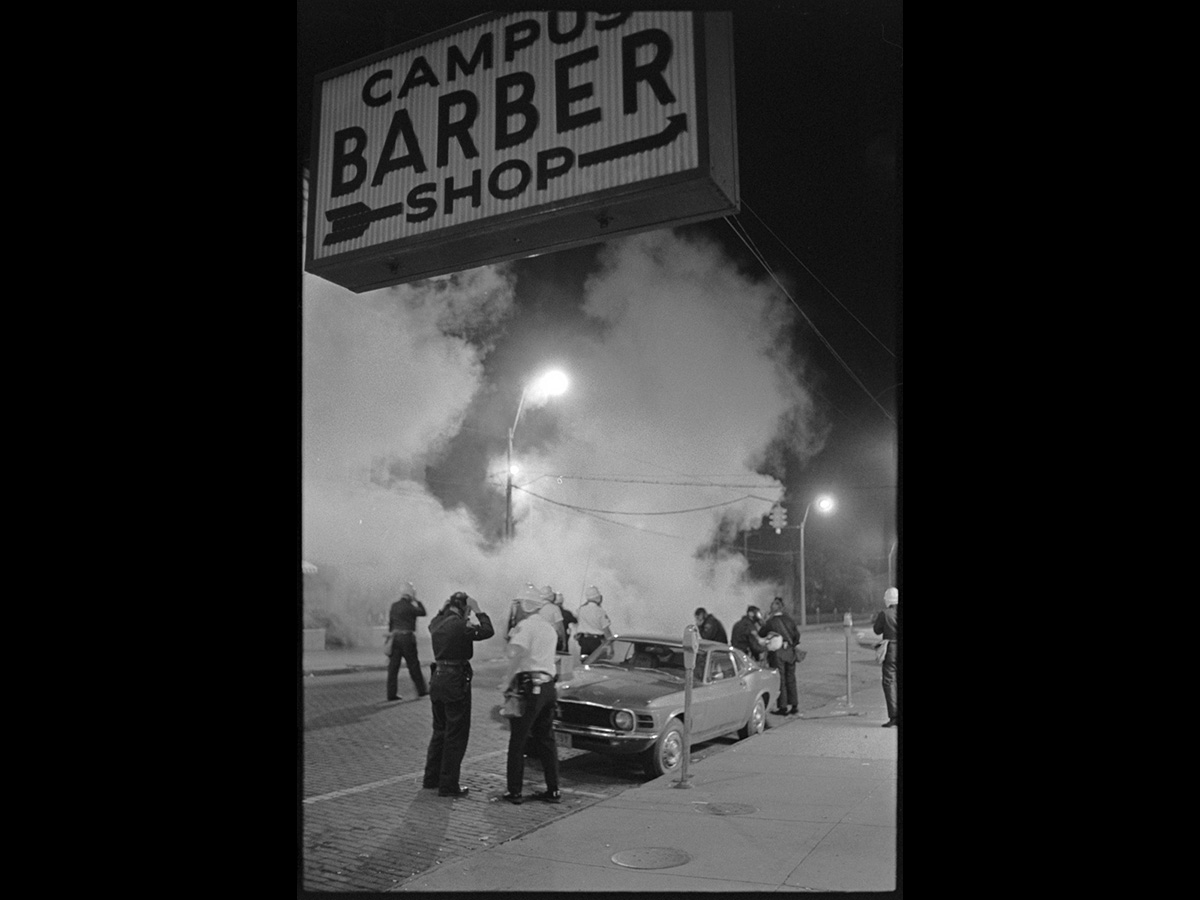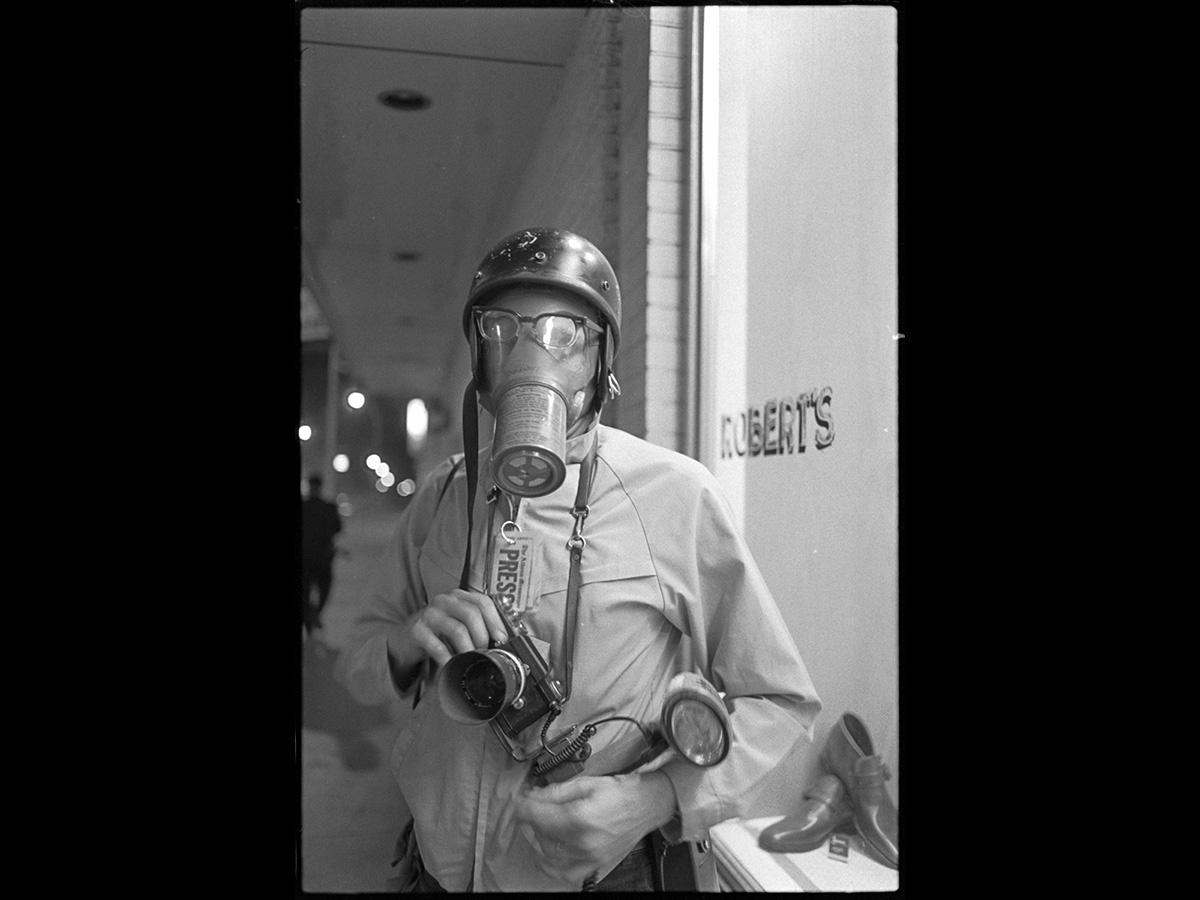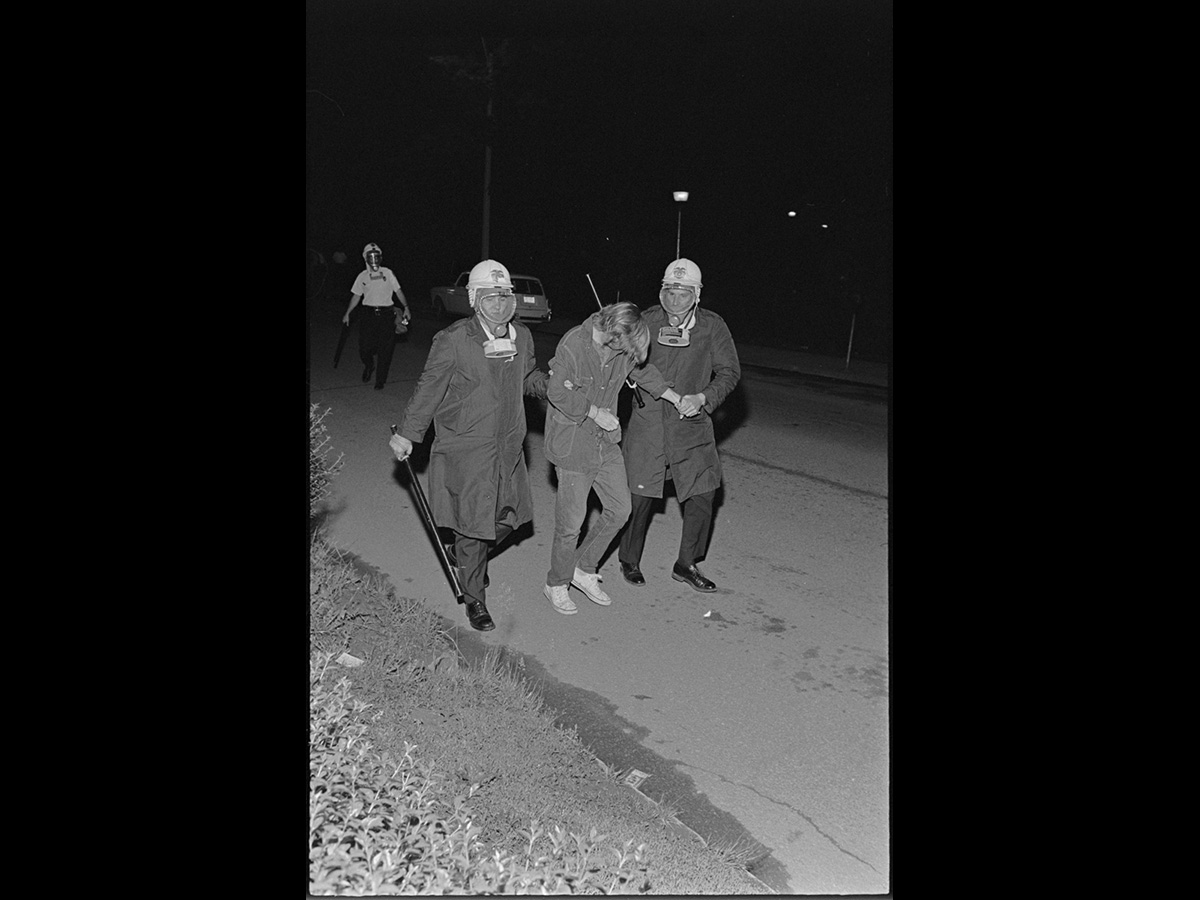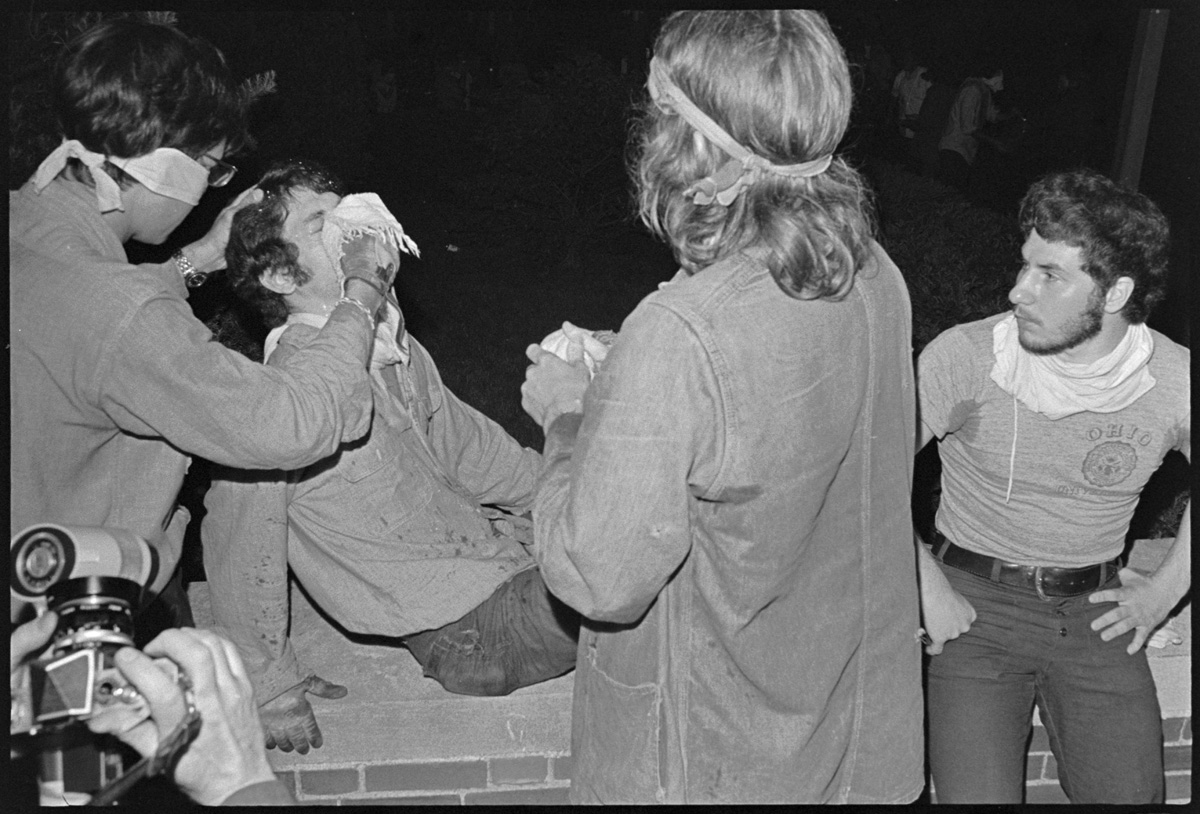By John Higgins, BA ’23, History and Political Science, Student Assistant, Digital Initiatives
Read other posts
from this series which recounts the spring 1970 student demonstrations at Ohio University and the administrative response, as documented in
campus security reports
from the time period.
The 11th through the 15th of May witnessed the dramatic ending to the student protests that began in late April of 1970. The week started out slow but steadily increased in activity until the university was placed between a rock and a hard place. The morning of May 11th, like the days before, had been mostly quiet with just a few reports coming from Bush Hall and concerned parents. At 7:00 a.m. a student called the control center and relayed information heard at United Campus Ministry the night before. According to the student’s report, a group of “militant” students were planning the “most radical strike attempt yet.” University officials were already prepared to monitor the rally at Grover Center with security staff dispatched to attend at 7:30 p.m., but at 6:46 p.m. a report came in that there was a sit-in planned at Chubb Library.
By 8:00 p.m. reports came back that there were around 1,000 students in Grover. By 8:20 p.m. their number had increased to 2,500. Again, reports circulated about a sit-in at Chubb Library, but this time it came with an exact time which was 12:00 a.m. The Athens Police Department called saying they would have officers waiting at intersections to help with traffic, although university officials were still unsure how or when the rally at Grover Center would end. At 10:45 p.m. a brick was thrown through the northeast window of Chubb. The control center quickly dispatched additional security officers to help guard the library. At 11:08 p.m., with about 100 students on the steps of Chubb Library, the window in the door was kicked in, and some students entered. The administration was dispatched to warn the students to leave.
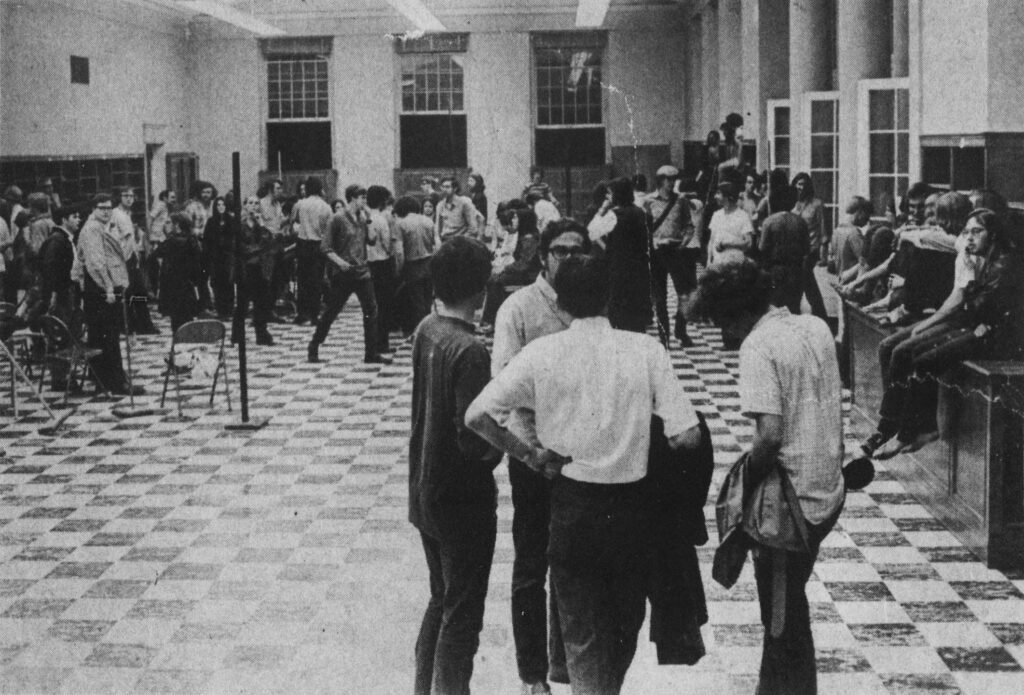
The morning of May 12th saw continued resistance from students refusing to leave Chubb Library. Concerns of fire began to spread as reports came in that students were attempting to light Chubb Library, Nelson Hall, and Building #13 on fire. At 2:05 a.m officials reported to the control center that a fire had been lit in Nelson and produced significant damage. An additional report at 2:58 a.m. stated that the fire in Building #13 had destroyed most of the mailroom. Tension among the university officials increased as students in Chubb barricaded themselves in, yet as of 6:20 a.m, no arrests had been made.
The control center heard rumors of a rally on Court Street at 12:00 p.m., but nothing materialized. At 1:30 p.m. and 1:43 p.m. officials received two bomb threats in the Speech building (Kantner Hall) and Grover, but nothing was found. The rest of the afternoon was spent searching for student marshall volunteers and obtaining information to prepare for the night to come. At 6:33 p.m. students reported to officials that the word on the street indicated tonight was “bomb night.” The first sign of action came at 7:54 p.m. when a fire was extinguished in the men’s restroom of Ewing. Shortly before 10:00 p.m. the control center and Athens Police began to receive various bomb threats throughout campus, but all were investigated and confirmed negative.
The bomb threats continued to pour in during the morning of May 13th, with one caller indicating that Carnegie, “Will be blown off the map at 9:00 a.m.” At 6:10 a.m. student marshals turned in their armbands and lights for the morning shift to go home, but a few insisted on staying. Around 10:00 a.m in the morning officers were dispatched to Porter Hall upon receiving a bomb threat, but they found nothing. At 10:42 a.m. the control center was astonished when a custodian turned in a small “time bomb” that he found in the trash. The State Highway Patrol was notified of the discovery. Again, at 12:00 noon, the control center received a bomb threat for Cutler. After an extensive search of the first floor and base, nothing was found.
At 4:38 p.m. university officials were alerted of a rumor that three buses were headed towards Athens and there was going to be a meeting at Baker Center at 7:30 p.m. The Associate Dean of Faculties had also heard from a group of girls that students were planning on taking Cutler to “show the President once and for all.” Word-of-mouth reports claimed that, “Ellis Hall will be placed on top of Culter Hall and that Alden Library will be used as a golf club to drive both in the river” ( Security report, May 13, 1970 ). From this point until 11:14 p.m. the control center was bombarded with rumors, bomb threats and student movements from green to green. At 11:00 p.m. with a large number of students protesting outside of Cutler Hall, President Sowle entered into the crowd to talk, and chaos broke loose on the campus.
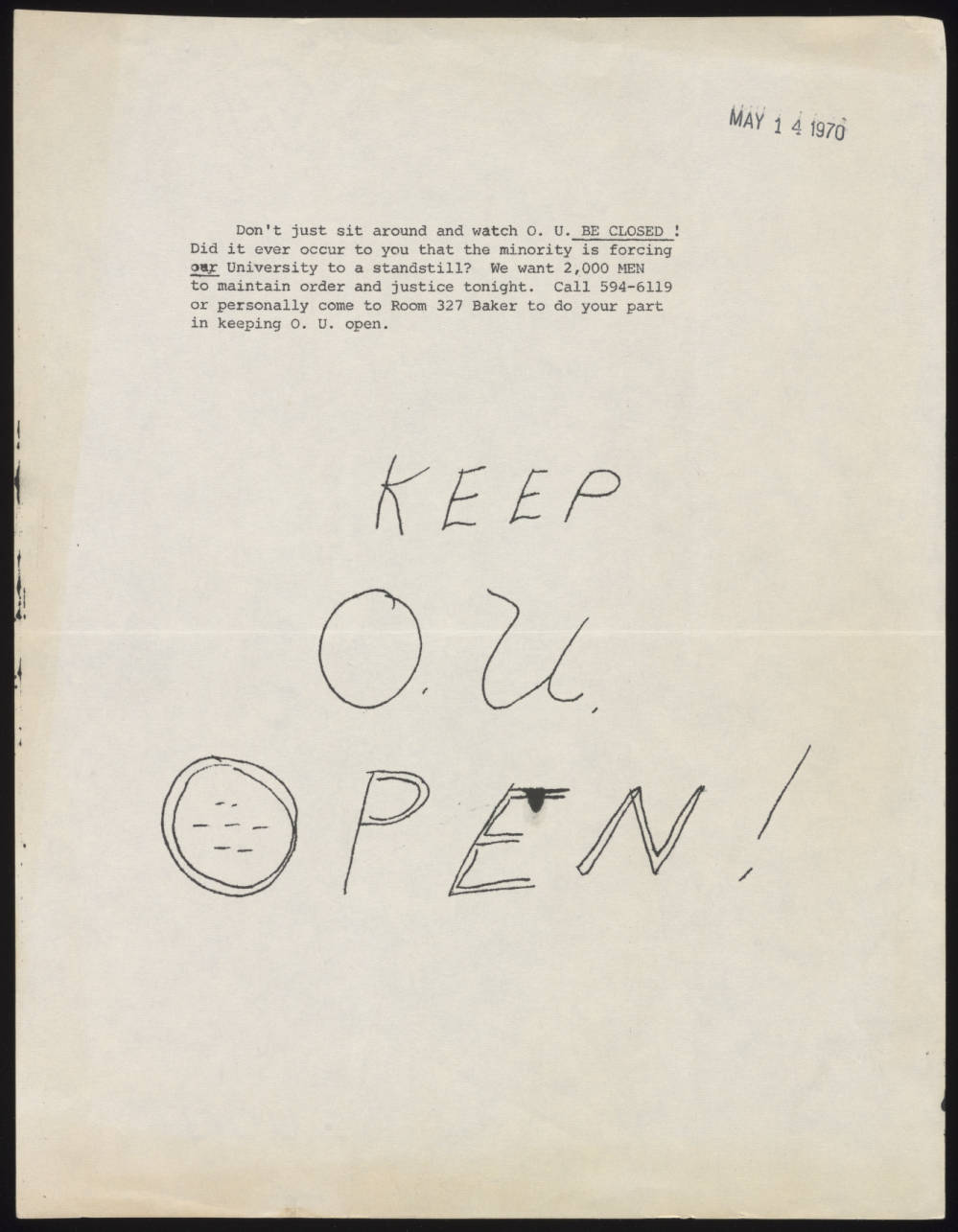
The morning of May 14th was met with incidents of destruction across the campus and uptown area. Bricks were thrown through the windows of Cutler Hall, forcing staff in the control center to evacuate in fear of being captured. Windows in Scott Quad, the Music Building and many other buildings were destroyed. A fire was reported in the Trisolini House. Ohio University Security and Athens Police began to arrest and use tear gas against the students. One report even indicated that tear gas had entered Howard and Voigt residence halls. It was not until 4:45 a.m. that the crowd began to dwindle and some form of order was restored. University officials desperately and quickly attempted to prepare for continued resistance by gathering as many student marshals and workers as possible for what would surely be another thunderous day and night.
At this point, rumors began circulating that the National Guard had been summoned, but this was proven inaccurate by an officer at the Athens Police Department. However he had received word that they were on standby alert. Throughout the day, tension built as the control center continued to receive minor reports of vandalism, rumors concerning student activity, and bomb threats, one of which claimed to target a nitrogen tank at Clippinger Hall. At 9:45 p.m. a group of students were reportedly moving into the street with firecrackers which prompted the Athens Police Department and the university to begin preparing officers. It wasn’t until 10:24 p.m. that a dispersal order was read to students blocking the intersection of Court and Union streets, shortly after which the beginning of the end began. As arrests were made and tear gas was deployed, the Athens Service and Safety Director requested the use of buses for assistance which was granted by the control center. As night fell, the chaos only increased and university officials in the control center began to drown in events being reported.
Student unrest and police intervention , night of May 14-15, 1970. University Photographer Collection
The final entry in the campus security reports was timestamped at 11:58 p.m and read, “Are having problems in Howard Hall area.” The early morning hours of May 15th were not covered in the security reports, but it can only be inferred that what occurred was irreversible. According to the May 15th edition of the Post, at 3:10 a.m. only 3 hours after the security reports ceased, an official statement was made by President Sowle that Ohio University was to close immediately, four weeks before the semester’s scheduled end. This moment in the history of OHIO left a permanent mark on the university–a moment that will go down for the rest of eternity.
